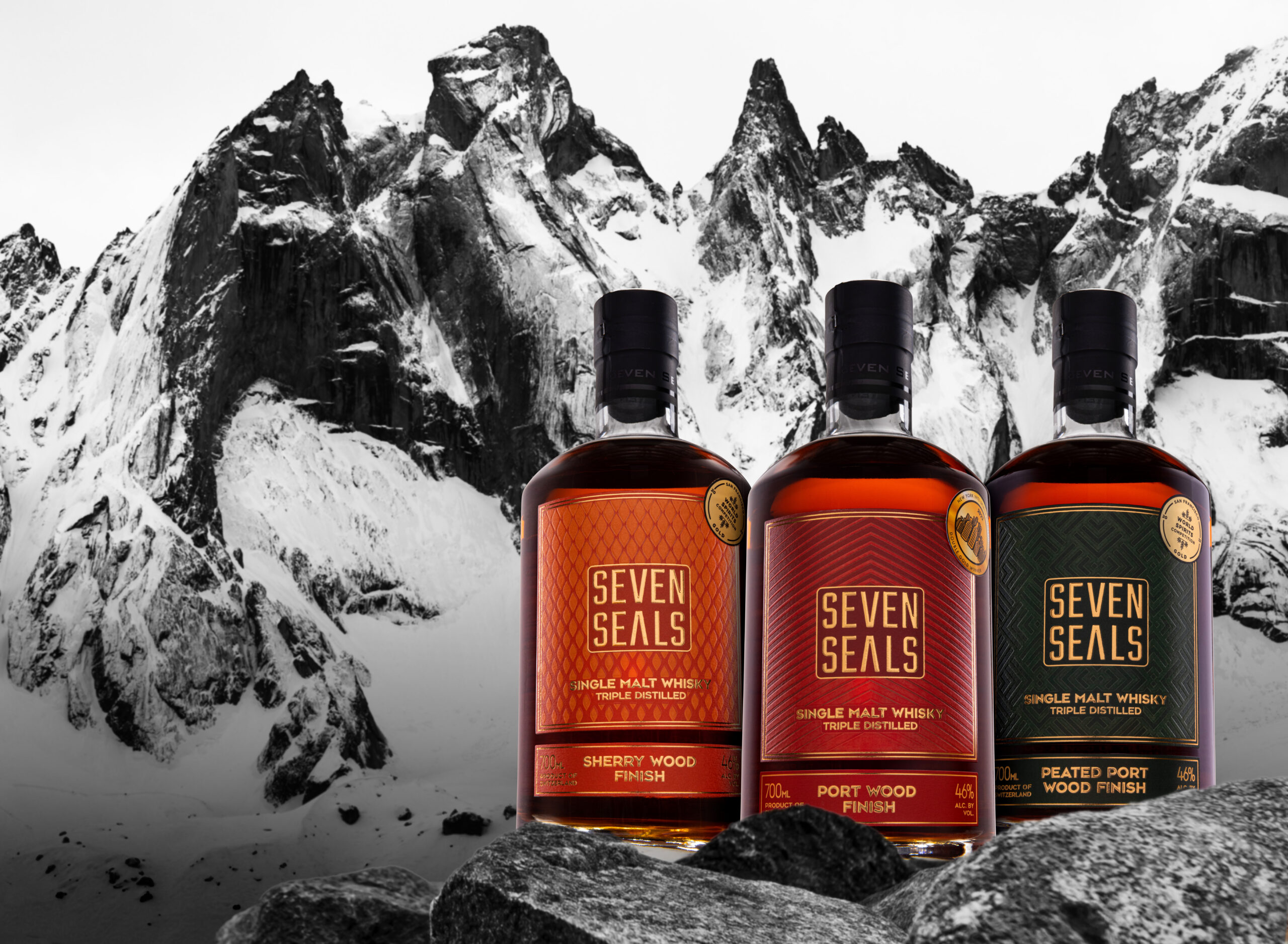
Whiskey carries with it a long and rich history; every expression of it is both an individual and collective statement of both past and present. Every whiskey product we have today is built upon the foundations of the product the distillery made in the past, carefully improved, meticulously refined, and expertly perfected. Distillers eventually learned that innovation can be embraced without risk of destroying the traditions of the trade, and in fact, improving on them.
Sure, whiskey is a product that blends both past and present; but now we can sample whiskey’s future with the introduction of, yes, a new innovation. Today, we have The Stockhausen Method, brought to the market by Seven Seals Innovation AG.
Why the name Seven Seals, and what does that have in common with whiskey? From the website: “Seven Seals is like the book with seven seals from the Bible, a great mystery. Only a small number of people know exactly how the process of finishing whisky takes place.” They have developed a proprietary and patented finishing process which allows scalable production by what they call ‘Fast Forward Finishing.’ The result is an “aroma rich whisky in weeks instead of years.” Around two weeks, to be more precise. Dr. Stockhausen, the genius behind all of this, surely seems to have cracked the code.
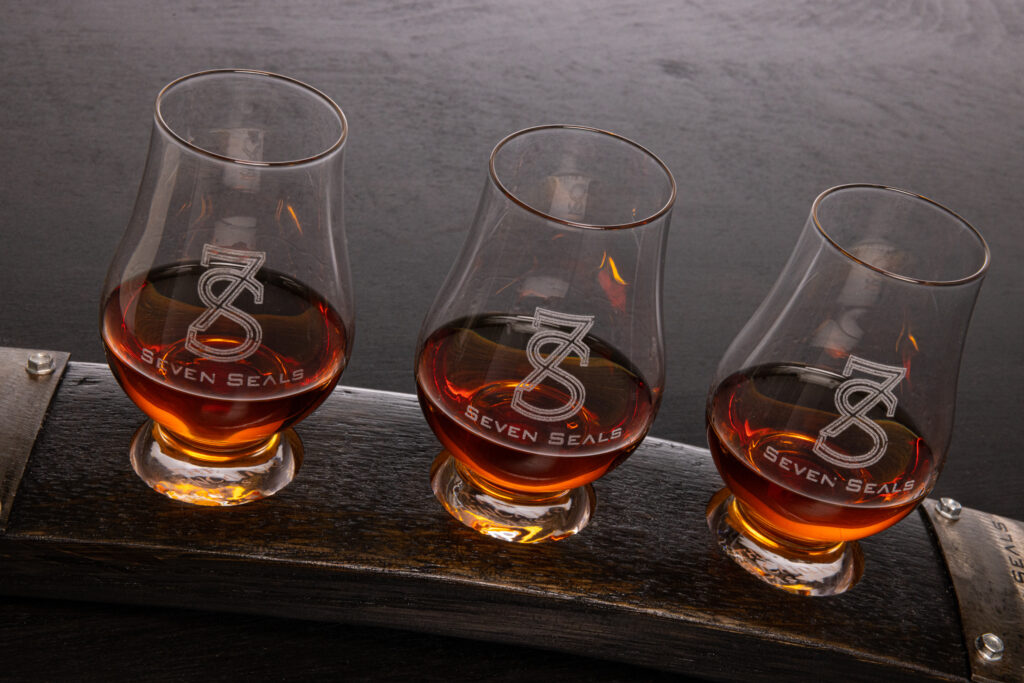
A Short Lesson of Whiskey Innovation
The incredible variety of whiskies offered to us today is a testimony of product advancement. Two of the enduring and dear traits of whiskey and the industry which supports it are its drive for variety and the ability for renewal. These features have resulted in a broad palette of fine expressions, new and traditional alike, all existing in roughly the same consumer space. Indeed, these periodic renewals have been led by incremental advancements and today the industry can boast that there is something to be had to satisfy every individual’s tastes, preferences, and budget.
A key element of advancement is the domino effect brought on by process of universal development– which begins with a simple inspiration. Inspiration begets new ideas; ideas are brought to life by Ingenuity; ingenuity is the spark that births innovation. The success of innovation becomes the fuel for growth and advancement in every field. Everything we see today in the marketplace, in medicine, in science, computers, automobiles, telephones, food production, housing, and so on…all sectors have been more or less impacted by this same cycle. The cycle is important to understand because civilization and the improvement of the human condition itself might stop cold without it. We may be right to say that proper innovation is the “life cycle” of advancement if we are talking about consumer goods.
However, innovation when it is first introduced is often met with fear, concern, and caution. Often these fears are valid. Most of the time, they are not; these are emotional responses which are simply inherent to human nature and give rise to reactionary statements like, “Well, we’ve never done it that way in the past, so doing it a different way is probably not good.” Or “We know what we know and we are comfortable with what we understand that already works. So we don’t need to try that here.” These emotions are a psychological defensive mechanism which intends to validate our present processes–but unfortunately stifles innovation. The result can often be a lost opportunity for both growth and advancement.
With regards to the specific lessons of whiskey innovation, we need look no further back in time than to 1830 and the introduction of Irishman Aeneas Coffey’s patented two-column, continuous distillation apparatus, which has been referred to as the Patent Still, the Coffey Still or column still.
The introduction of this innovation in distilling was like a “space age” development for those who lived in 1830. After centuries of making whiskey, for the first time ever this new process introduced rapid, continuous distillation of spirit compared to the rather small batches of time-consuming “pot still” or other common methods. And it is true, time is money. Unfortunately, the Irish whisky industry rejected this new innovation at that time, claiming that the product it produced was inferior and “not whisky.” The traditionalists in the industry felt threatened by the introduction of the new process; many legal battles ensued fueled by fear of the unknown. After all, they had “always used a pot still” to make “proper whiskey.”
The final outcome was an economic disaster for the Irish distillers. Aeneas Coffey soon left Ireland and took his patented still to Scotland, where it became wildly successful. Within a short period of years, blended Scotch whisky was suddenly poised to dominate the entire global market. The Irish distillers had learned a hard lesson, and seem to have been playing catch-up ever since.

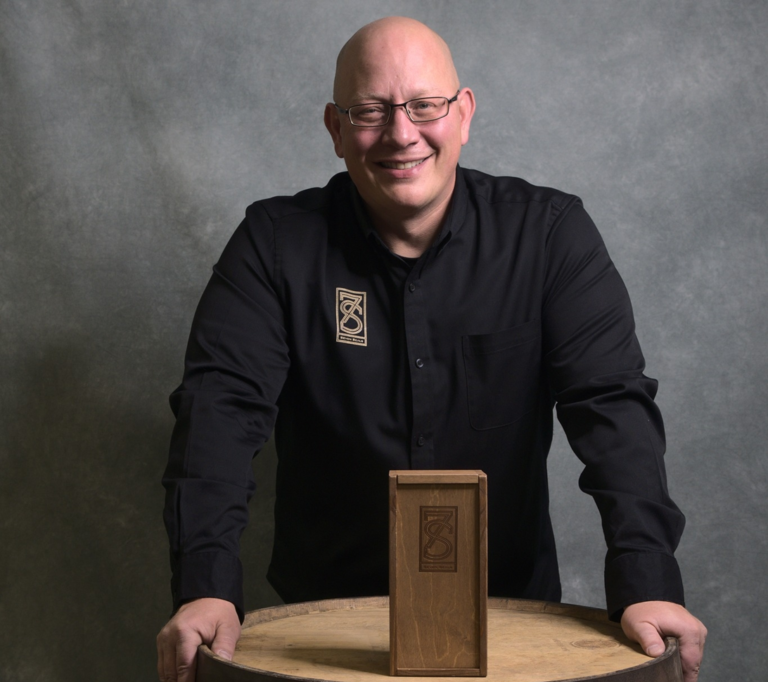
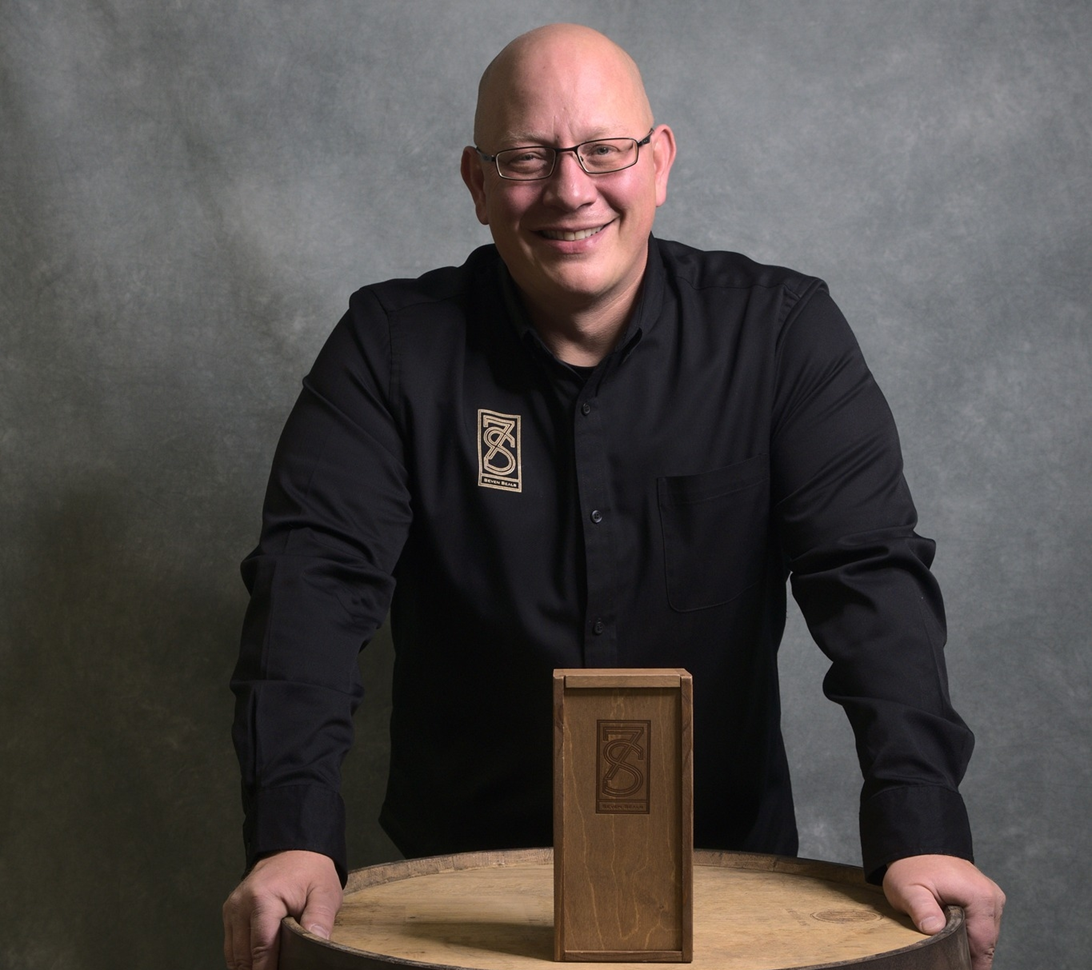
The Stockhausen Method
Seven Seals is certainly not playing catch-up. It is clearly on the cutting edge of development. What exactly is the Stockhausen method? From the Seven Seals website: “This method is used today to produce and refine spirits, especially whisky and rum. The inventor, Dr. Dolf Stockhausen, after whose name the new process is named, has revolutionized aging process entirely…His idea is based on a purely physical law that simulates aging in a barrel. In 2017, Dr. Dolf Stockhausen, who, after years of intensive studies, successfully developed a wood-based, high-quality, and…sustainable process…now known as the Stockhausen method, [whereby] the distillate is in contact with more surface area [of the wood] and the wood is specially treated, which rapidly shortens the aging process and produces a round, full-bodied flavor profile…[by using the] Stockhausen method…[we] can refine up to 2000 liters of distillate…[and] no chemicals are needed…Today, it can be said that the Stockhausen method represents the most innovative leap forward for spirits in the 21st century and has raised the finishing process barrel aged products to an entirely new level.”
I spoke with both Dr. Stockhausen and Mr. Volker Huber, the President & CEO of Seven Seals USA. They explained that what Dr. Stockhausen has learned is what precisely occurs when distilled alcohol comes into contact with the wood that it is aged in. Once this is understood on a molecular level, it became possible for him to develop a process to cause these reactions using the very same materials–just not in the form of a clumsy wooden barrel. The results are undeniably astonishing.
Dr. Stockhausen realized early on that the shape of barrels was truly inefficient for whisky aging. Why? Because the aim of the aging process is to result in modifying the flavor, aroma (and some might add color) of the raw distillate. It is not how much time the distillate sits, but rather its aging is a function of Fick’s Law of Diffusion which factors surface area, contact with the materials, temperature, and pressure. The barrel as a shape offers relatively little surface area and contact with the distillate.
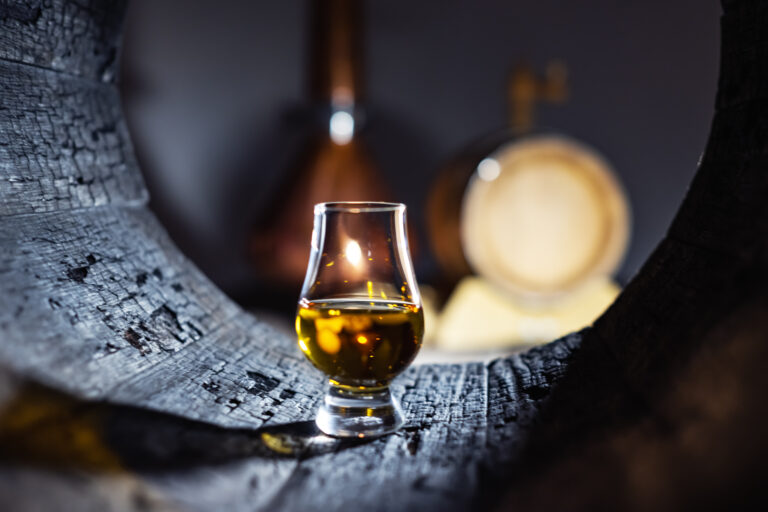
The time honored practice of charring the inside of each barrel is known to bring out the wood sugars, vanillin, phenols, etc. which are the key chemical compounds for the natural flavors discovered in whiskies. Again, the barrel falls short in this respect. Dr. Stockhausen learned that charring the barrels at a high temperature is not efficient at maximizing the presence of these important compounds, and actually burns some of them off. He determined that using much lower temperatures to treat the wood without charring it dramatically improves the intended result.
There are other problems with barrels, too; practical ones. With the dramatic increase in demand for aged spirits, the world is running out of quality barrels to age it all in. It takes many years to grow an oak tree and so new barrel production must be planned for years in advance. This hasn’t worked out so well lately. There is in fact, a barrel shortage and this issue isn’t going away.
With the shape of the barrel all wrong, the process used to prepare the wood in the barrel inefficient, and the supply of barrels getting tighter every week, what is the best practice now? Volker Huber says, “We don’t bring the whisky to the barrel, we take the barrel to the whisky.” The Stockhausen Method has made the use of barrels for whisky production to go the way of the buggy whip. A process that once was seen as essential is now shown to be inefficient, unsustainable and becoming irrelevant.
A Sustainable Process
One word that kept coming up at our interview was sustainability. This was especially focused on the wood needed for the process. Dr. Stockhausen has perhaps unwittingly adopted the Henry Ford method:
In 1919, the Ford Motor Company sold in excess of a million Ford Model T cars. Wood was a key component in the production of these cars, as a single car used a hundred board feet of wood for the various parts. Henry Ford saw the large amount of wood waste generated by trim, stumps, branches, etc., and decided that all wood scraps would be processed into charcoal and sold. Thomas Edison then designed the briquette factory adjacent to Ford’s sawmill, and Henry Ford’s new company, Kingsford ran it. It was a model of efficiency, producing 610 lb of briquettes for every 2000 pounds of scrap wood.
Today, nearly 70% of the wood harvested for barrel making is wasted as scrap. The Stockhausen method utilizes the scrap wood leftover from the construction of new barrels, as well as old wood from worn out barrels. This material is shredded, and then washed in water, “Lots of water,” said Dr. Stockhausen. This washing is essential to improve the end product by removing tannins that make whisky bitter. Then the chips are toasted to restore the flavor inducing compounds. Tannins cannot be washed out of a barrel, another advantage of the Stockhausen Method. The spent chips are then sold for other purposes and finally burned as smoking chips for cooking.
A three-year-old whisky product* is mixed with the washed and toasted wood chips where two processes take place simultaneously over the course of the two weeks. This is centered on that Fick’s Law of Diffusion which breaks down to both subtractive and additive maturation. The wood chips absorb undesirable compounds like methanol and other bitter-forming compounds while imposing wood sugars, vanillin, and phenol derivatives that are desirable compounds.
The resulting product is then filtered using a special filtering process that only removes the long chain fatty acids, but retains all the other flavor compounds usually lost to chill filtering. They add no colorants, flavorings or any other chemicals.
From the Seven Seals website:
“…consistency is key. Thanks to the precisely adjusted production process, it is possible to ensure that each batch, i.e., each bottle…[has] the same quality. This is impossible to guarantee with classic barrel aging, each barrel having its specific characteristics.”
The new process is not only a time saver, but is also more efficient:
“The faster maturation of the spirit also massively reduces the “Angels’ Share.” This means less loss for the producer since his product does not dissolve into “thin air.” In essence, more profit. This, in turn, means an attractive selling price for high-quality spirits. This result is achieved by massively lowering production costs.”
* ASeven Seals uses three-year-old single malt whisky because most countries require a distillate to be aged three years before it can be legally named and marketed as whisky. Politicians do not yet understand the Stockhausen Method.
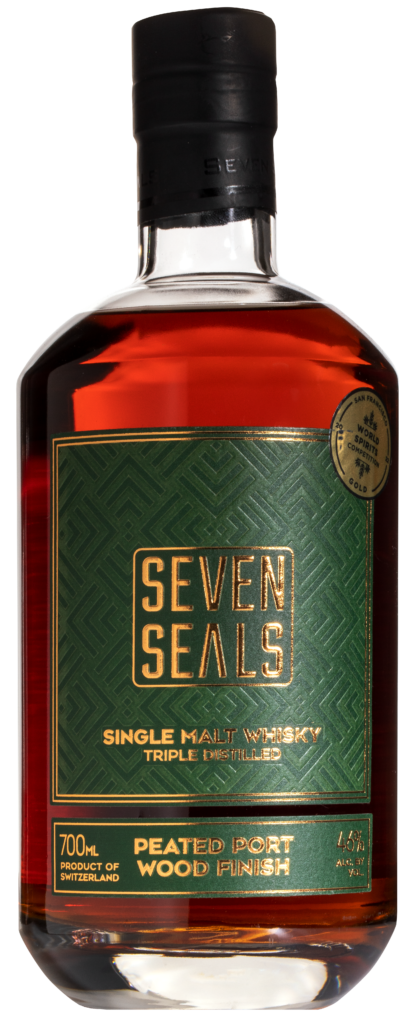

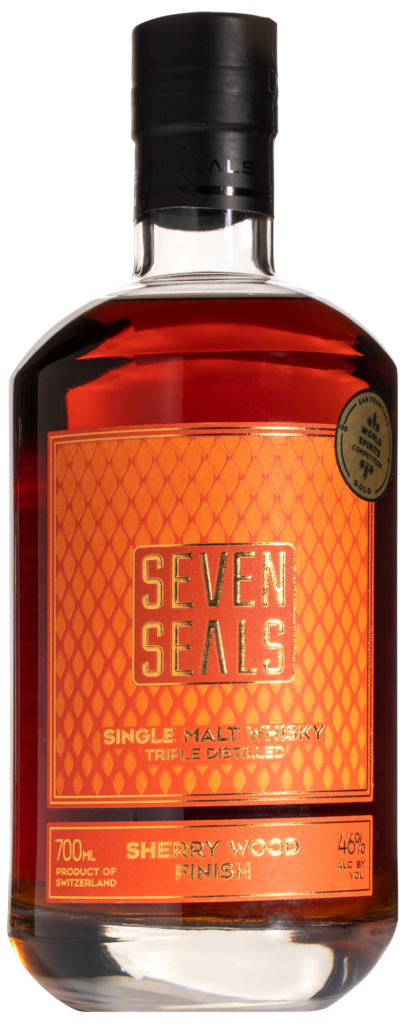
Seven Seals Products
Seven Seals produces three different lines of whisky, all single malt barley spirits:
The Classic line includes whiskys with Port Wood Finish, Sherry Wood Finish, Peated Port Wood Finish, all 46% ABV.
Next is a Peated Double Wood Finish Cask Proof expression that is bottled at 58.7% ABV.
Finally, the Zodiac line includes twelve limited edition expressions with the names of the twelve zodiac signs. These are limited batches of only 365 bottles for each expression. They are bottled at 49.7% ABV.
Each expression is individually fine-tuned for a unique whisky flavor profile.
All of this sounds amazing. Almost unbelievable. The proof must be found in the product. “The Stockhausen method uses American and French oak just as is the case with classic barrel aging.” So what do they taste like? I had to try them for myself and I was fortunate to have samples of the Classic Line provided.
Tasting Notes
I used three seperate Glencairn glasses, and waited an hour between tastings, drinking water to reset my palate.
Starting with the Sherry Wood Finish, in my Glencairn glass its appearance is a light auburn color. On the nose it initially opens with a gentle sweetness. Then it presents an herbal forward maltiness, with a bit of stronger brewery malt. There are woody undertones in the background. On the palate, the body is elegant and carries a gentle sweetness forward with notes of clove and hints of spice. A pleasant but faint toasted wood character is there in the background. The medium-finish length is both smooth and clean, lacking any bite.
Second up was the Port Wood Finish. In the glass its appearance is somewhere between tawny and mahogany. On the nose it opens with a spicy herbal, earthy aroma which quickly moves towards a combination of mulch, toasted wood and a bit of malt. On the palate, the body is robust and decidedly drier. I taste notes of anise, lemongrass, and a hint of clove and cinnamon. A toasted wood character is there in the background, too, but quite faint. The finish length is shorter, but also both smooth and clean, and no snappiness at the end.
Lastly, the Peated Port Wood Finish. In the glass its appearance is a pleasing auburn. On the nose it opens with a sweet earthy, smoky aroma like campfire. Toffee is forward with a buttery caramel undertone. On the palate, the body is refined and well-balanced; neither too sweet nor too dry. It has a wholesome, earthy character of the peat and could pass for a scotch in a blind test, I’m sure. Again, a toasted wood character is there in the background, too, but with a fair amount of smokiness. The finish length is longer and pleasant, with a faint medicinal twang lingering at the very end.
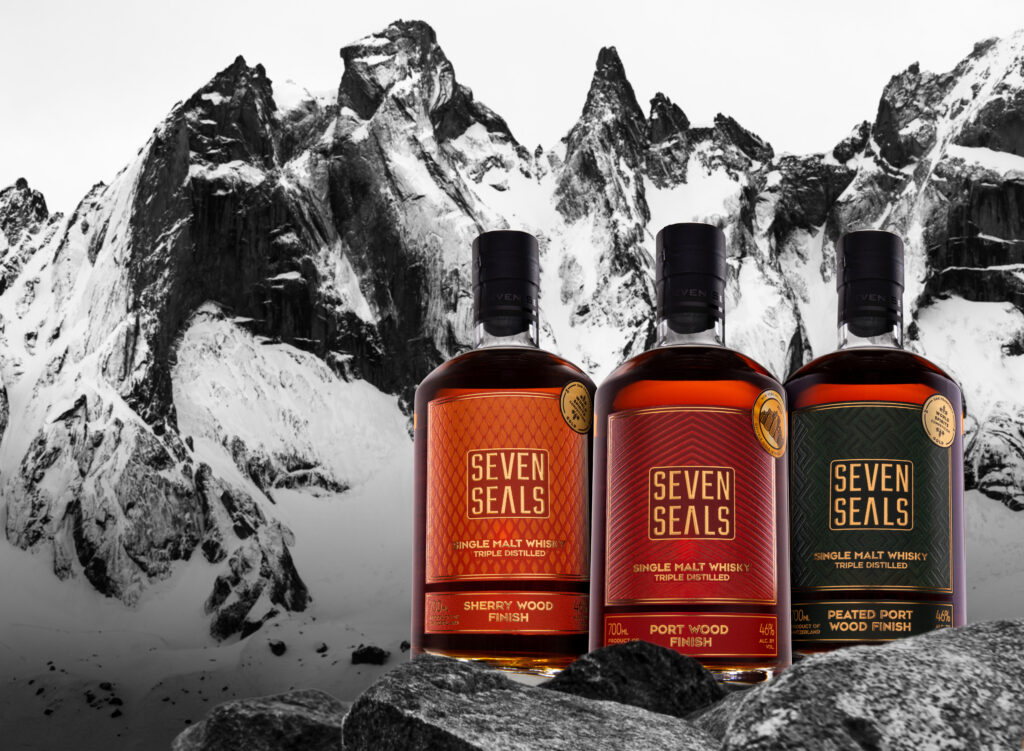
Bottom Line
Perhaps the challenge for a whiskey traditionalist is to consider this question: are you really buying time in a barrel, or are you buying the flavors you love? With Seven Seals, the consumer can find an expression that could be the equivalent of a ten-year-old, or more, aged product for a fraction of the price. Dr. Stockhausen says that in blind taste tests their product performs “as good if not better than matured scotch whisky.” After sampling it myself, I have to agree with him.
Volker Huber tells me that Seven Seals has a saying, “Time doesn’t matter, taste does,” and the international whiskey community agrees. Since 2018, Seven Seals products have been awarded in 34 international competitions earning an impressive 14 Double or Grand Gold, 69 Gold Medals, 26 Silver Medals, three Three-star and 10 Best Whisky in the competition awards.
What Seven Seals has done with its patented innovative Stockhausen method represents nothing less than a seismic shift in modern whiskey production. New efficiencies have now been unlocked; the shackles of time now broken. If he were still alive, I believe that Aeneas Coffey would certainly approve.
To learn more about any of the Seven Seals products, please go here.
www.7sealsinnovation.com or E-mail: [email protected].


